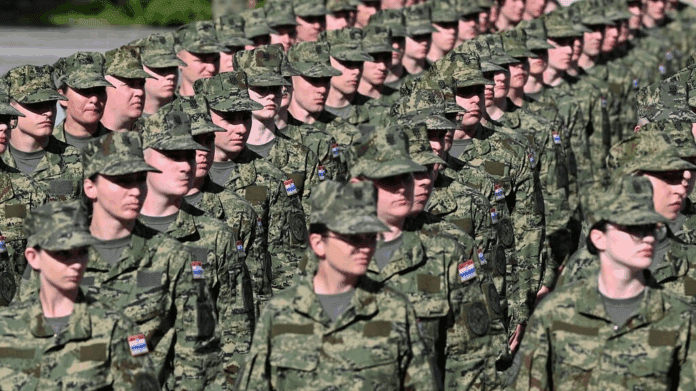Croatia is aligning with NATO’s defence spending targets, preparing to invest 5% of its GDP in military and civil-military infrastructure by 2035.
This includes modernising transport corridors, ports, and airports to support NATO troop mobility. Learn how Croatia plans to integrate national projects into NATO commitments while strengthening security and critical infrastructure across the country.
Croatia Preparing for Increased NATO Defence Spending
Croatia is preparing to make the most of the already agreed NATO plan under which every country, by no later than 2035, must allocate 5 per cent of its gross domestic product (GDP) for military purposes.
Of this, 3.5 per cent is designated exclusively for military use, including weaponry and equipment, as well as expenses for soldiers and officers. The remaining 1.5 per cent of those funds can be used for civil-military purposes — namely, for civilian infrastructure projects that would support the mobility of military troops if necessary.

Strategic Investment in Military Mobility Infrastructure
However, investments cannot be made arbitrarily; the aim is to improve transport corridors to facilitate the easier and safer movement of NATO units through Croatia to destinations across Europe.
In Croatia’s case, this primarily means expanding the military sections of airports, enlarging seaports to accommodate large military vessels, and improving road and rail corridors that connect Croatian ports to Central Europe.
Indeed, even now, NATO military equipment arrives at Croatian ports and is then transported by road or rail — under special escort and surveillance — towards Ukraine.
Integrating National Projects into NATO Commitments
In this context, according to Večernji list on Monday, Croatia will seek to integrate some of its own infrastructure improvement needs — projects it intended to build independently of the NATO plan — into those military expenditures.
This approach would make it easier to secure funding and favourable loans for such ventures, even though each country, Croatia included, will ultimately have to pay for them itself. For example, there are plans to incorporate the construction of a third motorway lane from Zagreb to Bosiljevo, where the road branches off to Split and Rijeka.
Relieving Traffic Congestion and Meeting Security Standard
This motorway, which should have three lanes in each direction, is a vital need for Croatia, as summer traffic often grinds to a halt in endless queues heading towards the coast. A minor traffic accident is enough to bring everything to a standstill, turning a trip into a seemingly never-ending ordeal.
Rest areas along these motorways would also be expanded so that large military convoys could park there — something currently not possible. New viaducts would be built, as some existing ones clearly do not meet the safety requirements for transporting large NATO systems.
Upgrading Airports, Seaports, and Rail Infrastructure
Where necessary, railway bridges would also be reinforced. Particularly significant projects are planned for certain airports, especially the one in Zemunik near Zadar, which NATO aircraft frequently use even now. Additionally, some seaports will be upgraded with new docking areas to allow for the unloading of military equipment.
Plans have been drawn up and, as things stand, they will be implemented, as there are no indications that Russia will abandon its aggressive policy — one that targets not only Ukraine but also other countries, some of which are NATO members.
Enhanced Domestic Security and Critical Infrastructure Protection
Meanwhile, security in Croatia — although not immediately visible — has been significantly strengthened in recent times. A law on critical infrastructure has been adopted, offering stronger protection than before to vital structures such as bridges, viaducts, and other key facilities, which will not be named here.
For example, the Krk Bridge, and even more so the Pelješac Bridge, are guarded around the clock, with strict prohibitions on approaching them or navigating beneath them. This is enforced under a rather stringent regime.


